My
List |
Addition Date
|
Target
|
Mission
|
Instrument
|
Size
|

|
2022-06-07 |
Europa
|
Europa Clipper
|
|
3300x2201x3 |
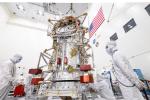
|
-
PIA25236:
-
Europa Clipper's Core
Full Resolution:
TIFF
(16.81 MB)
JPEG
(979.9 kB)
|

|
2022-06-07 |
Europa
|
Europa Clipper
|
|
3300x2201x3 |
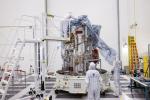
|
-
PIA25237:
-
Revealing Europa Clipper's Core
Full Resolution:
TIFF
(18.52 MB)
JPEG
(1.033 MB)
|

|
2022-06-07 |
Europa
|
Europa Clipper
|
|
8192x5464x3 |
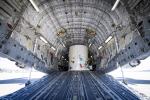
|
-
PIA25238:
-
NASA's Europa Clipper Arrives in Southern California
Full Resolution:
TIFF
(120 MB)
JPEG
(7.298 MB)
|

|
2022-06-07 |
Europa
|
Europa Clipper
|
|
8192x5464x3 |
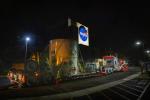
|
-
PIA25239:
-
Europa Clipper: Rolling Into NASA's Jet Propulsion Laboratory
Full Resolution:
TIFF
(102.4 MB)
JPEG
(15.12 MB)
|

|
2022-08-24 |
Europa
|
Europa Clipper
|
|
8256x5504x3 |
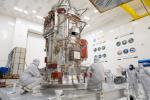
|
-
PIA25240:
-
NASA's Europa Clipper Takes Center Stage
Full Resolution:
TIFF
(95.51 MB)
JPEG
(4.197 MB)
|

|
2022-08-24 |
Europa
|
Europa Clipper
|
|
8256x5504x3 |
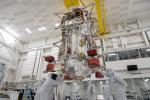
|
-
PIA25491:
-
The Lift: NASA's Europa Clipper Moves Into Position
Full Resolution:
TIFF
(99.1 MB)
JPEG
(4.405 MB)
|

|
2022-08-24 |
Europa
|
Europa Clipper
|
|
7981x5321x3 |
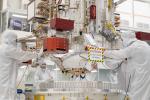
|
-
PIA25492:
-
Easy Does It: NASA's Europa Clipper Is Lowered Into Place
Full Resolution:
TIFF
(94.94 MB)
JPEG
(4.231 MB)
|

|
2022-08-24 |
Europa
|
Europa Clipper
|
|
4000x3000x3 |
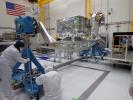
|
-
PIA25493:
-
NASA's Europa Clipper: Vault and Nadir Deck on the Move
Full Resolution:
TIFF
(29.35 MB)
JPEG
(1.119 MB)
|

|
2022-09-29 |
Europa
|
Juno
|
JunoCam
|
3037x730x1 |

|
-
PIA25330:
First Image of Europa From Juno's Close Flyby
Full Resolution:
TIFF
(1.766 MB)
JPEG
(187.3 kB)
|

|
2022-10-05 |
Europa
|
Juno
|
Stellar Reference Unit (SRU)
|
512x512x1 |
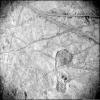
|
-
PIA25332:
-
Juno's Star Camera Sees Europa Close-Up
Full Resolution:
TIFF
(262.6 kB)
JPEG
(69.96 kB)
|

|
2022-10-06 |
Europa
|
Juno
|
JunoCam
|
2309x1004x3 |
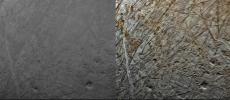
|
-
PIA25333:
-
JunoCam Images of Europa, Before and After
Full Resolution:
TIFF
(4.846 MB)
JPEG
(255.6 kB)
|

|
2022-10-06 |
Europa
|
Juno
|
JunoCam
|
3296x3920x3 |

|
-
PIA25334:
-
JunoCam Image of Europa From Flyby
Full Resolution:
TIFF
(19.11 MB)
JPEG
(804.8 kB)
|

|
2022-10-06 |
Europa
|
Juno
|
JunoCam
|
2058x1577x3 |
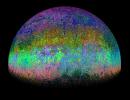
|
-
PIA25335:
-
Candy-Colored JunoCam Image of Europa
Full Resolution:
TIFF
(7.26 MB)
JPEG
(940.8 kB)
|

|
2022-11-23 |
Europa
|
Europa Clipper
|
|
5472x3648x3 |
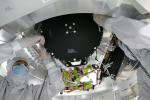
|
-
PIA25494:
-
NASA's Europa Clipper Gets Its Reaction Wheels
Full Resolution:
TIFF
(42.04 MB)
JPEG
(1.56 MB)
|

|
2022-11-23 |
Europa
|
Europa Clipper
|
|
4000x3000x3 |
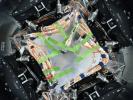
|
-
PIA25495:
-
NASA's Europa Clipper Reaction Wheels Installed
Full Resolution:
TIFF
(33.67 MB)
JPEG
(1.456 MB)
|

|
2022-11-23 |
Europa
|
Europa Clipper
|
|
5504x8256x3 |

|
-
PIA25496:
-
NASA's Europa Clipper: Reaction Wheel Installation
Full Resolution:
TIFF
(95.06 MB)
JPEG
(4.362 MB)
|

|
2022-11-23 |
Europa
|
Europa Clipper
|
|
5472x3648x3 |
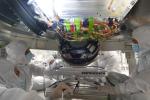
|
-
PIA25497:
-
NASA's Europa Clipper Reaction Wheel in Process
Full Resolution:
TIFF
(45.76 MB)
JPEG
(1.575 MB)
|

|
2022-12-14 |
Europa
|
Juno
|
JunoCam
|
662x1125x3 |

|
-
PIA25694:
-
Looking for Eruptions at Jupiter's Moon Europa
Full Resolution:
TIFF
(2.087 MB)
JPEG
(72.94 kB)
|

|
2022-12-14 |
Europa
|
Juno
|
JunoCam
|
1275x1125x3 |
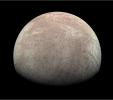
|
-
PIA25695:
-
NASA's Juno Mission Captures Images of Europa
Full Resolution:
TIFF
(1.836 MB)
JPEG
(135.5 kB)
|

|
2022-12-14 |
Europa
|
Juno
|
JunoCam
|
1466x1125x3 |
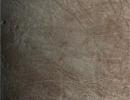
|
-
PIA25696:
-
JunoCam Close-Up of Europa
Full Resolution:
TIFF
(4.837 MB)
JPEG
(214 kB)
|

|
2023-04-14 |
Europa
|
Galileo
|
Solid-State Imaging
|
400x400x1 |
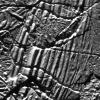
|
-
PIA25498:
-
Europa Close-Up
Full Resolution:
TIFF
(160.4 kB)
JPEG
(40.6 kB)
|

|
2023-04-14 |
Europa
|
Galileo
|
Solid-State Imaging
|
360x360x1 |
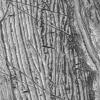
|
-
PIA25499:
-
Europa's Surface: Up-Close Topography
Full Resolution:
TIFF
(130 kB)
JPEG
(35.73 kB)
|

|
2023-08-15 |
Europa
|
Europa Clipper
|
|
4215x5623x3 |

|
-
PIA25956:
-
Europa Clipper Gets Its High-Gain On
Full Resolution:
TIFF
(55.95 MB)
JPEG
(2.381 MB)
|

|
2023-08-15 |
Europa
|
Europa Clipper
|
|
8272x6200x3 |
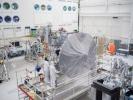
|
-
PIA25957:
-
Europa Clipper's High-Gain Antenna Installed
Full Resolution:
TIFF
(122.1 MB)
JPEG
(4.813 MB)
|

|
2023-08-15 |
Europa
|
Europa Clipper
|
|
7959x5306x3 |
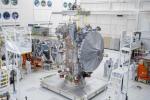
|
-
PIA25958:
-
Powerful Antenna Installed On Europa Clipper
Full Resolution:
TIFF
(100.3 MB)
JPEG
(5.174 MB)
|

|
2023-10-24 |
Europa
|
Europa Clipper
|
|
3840x2160x3 |
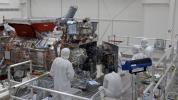
|
-
PIA25959:
-
Closing of the Europa Clipper Vault
Full Resolution:
TIFF
(19.59 MB)
JPEG
(827.2 kB)
|

|
2023-11-15 |
Europa
|
Europa Lander
|
Landing System
|
1743x1019x3 |

|
-
PIA26010:
-
Testing Hardware for Potential Future Landing on Europa
Full Resolution:
TIFF
(3.768 MB)
JPEG
(185.6 kB)
|

|
2024-01-17 |
Europa
|
Europa Lander
|
Landing System
|
4032x3024x3 |
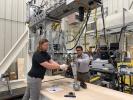
|
-
PIA26198:
-
Engineers Prepare Europa Lander Landing Gear for Test
Full Resolution:
TIFF
(32.87 MB)
JPEG
(1.417 MB)
|

|
2024-01-17 |
Europa
|
Europa Lander
|
Landing System
|
1670x935x3 |
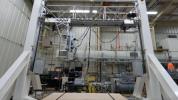
|
-
PIA26199:
-
Testing a Landing Gear for Potential Future Landing on Europa
Full Resolution:
TIFF
(4.183 MB)
JPEG
(224.1 kB)
|

|
2024-01-17 |
Europa
|
Europa Lander
|
Landing System
|
1670x935x3 |
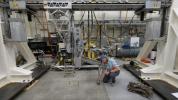
|
-
PIA26200:
-
System Checkouts on Testbed for Europa Lander Landing Gear
Full Resolution:
TIFF
(4.207 MB)
JPEG
(232.5 kB)
|

|
2024-01-30 |
Europa
|
Europa Clipper
|
|
7591x5829x3 |
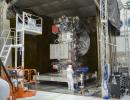
|
-
PIA26061:
-
Europa Clipper With Instruments Aboard
Full Resolution:
TIFF
(119.7 MB)
JPEG
(5.408 MB)
|

|
2024-03-04 |
Europa
|
Juno
|
|
3840x4883x3 |

|
-
PIA26239:
-
Oxygen Production at Europa (Illustration)
Full Resolution:
TIFF
(36.07 MB)
JPEG
(1.764 MB)
|

|
2024-03-08 |
Europa
|
Europa Clipper
|
|
8272x6200x3 |

|
-
PIA26062:
-
Europa Clipper's 'Golden Record'
Full Resolution:
TIFF
(25.45 MB)
JPEG
(1.807 MB)
|

|
2024-03-08 |
Europa
|
Europa Clipper
|
|
7661x5742x3 |
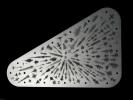
|
-
PIA26063:
-
Europa Clipper's 'Water Words'
Full Resolution:
TIFF
(45.55 MB)
JPEG
(2.922 MB)
|

|
2024-03-27 |
Europa
|
Europa Clipper
|
|
6200x8272x3 |

|
-
PIA26064:
-
Europa Clipper Prepares for Test in Space Simulator
Full Resolution:
TIFF
(92.94 MB)
JPEG
(3.43 MB)
|

|
2024-03-27 |
Europa
|
Europa Clipper
|
|
8256x5504x3 |
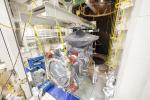
|
-
PIA26065:
-
Europa Clipper Rolls Into Thermal Vacuum Testing
Full Resolution:
TIFF
(114 MB)
JPEG
(5.705 MB)
|

|
2024-04-11 |
Europa
|
Europa Clipper
|
|
8272x6200x3 |

|
-
PIA25319:
-
Explaining the Science of Europa
Full Resolution:
TIFF
(121.7 MB)
JPEG
(5.543 MB)
|

|
2024-04-11 |
Europa
|
Europa Clipper
|
|
8256x5504x3 |
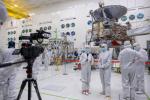
|
-
PIA26291:
-
JPL Shows Off Europa Clipper in the Clean Room
Full Resolution:
TIFF
(113.2 MB)
JPEG
(4.755 MB)
|

|
2024-04-11 |
Europa
|
Europa Clipper
|
|
7071x5300x3 |
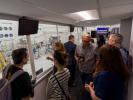
|
-
PIA26292:
-
A View of Europa Clipper From Above
Full Resolution:
TIFF
(90.36 MB)
JPEG
(3.553 MB)
|

|
2024-05-15 |
Europa
|
Juno
|
JunoCam
|
1648x1648x3 |
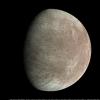
|
-
PIA26331:
-
A JunoCam View of Europa
Full Resolution:
TIFF
(4.367 MB)
JPEG
(234.3 kB)
|

|
2024-05-15 |
Europa
|
Juno
|
Stellar Reference Unit (SRU)
|
4059x3142x3 |
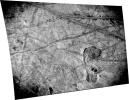
|
-
PIA26332:
-
Europa Seen Up Close by Juno's SRU
Full Resolution:
TIFF
(6.623 MB)
JPEG
(1.489 MB)
|

|
2024-08-27 |
Europa
|
Europa Clipper
|
|
1920x1280x3 |
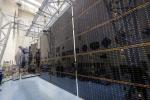
|
-
PIA26066:
-
Testing Europa Clipper's Solar Arrays
Full Resolution:
TIFF
(7.203 MB)
JPEG
(507.3 kB)
|

|
2024-08-27 |
Europa
|
Europa Clipper
|
|
1280x1920x3 |

|
-
PIA26067:
-
Europa Clipper Solar Arrays Stowed for Launch
Full Resolution:
TIFF
(6.854 MB)
JPEG
(456.5 kB)
|

|
2024-08-27 |
Europa
|
Europa Clipper
|
|
3840x2160x3 |
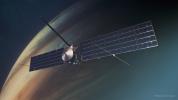
|
-
PIA26068:
-
Europa Clipper Artist's Concept
Full Resolution:
TIFF
(19.04 MB)
JPEG
(749.3 kB)
|

|
2024-09-09 |
Europa
|
Europa Clipper
|
|
3840x2160x3 |
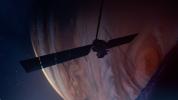
|
-
PIA26431:
-
Europa Clipper in the Shadow of Jupiter (Artist's Concept)
Full Resolution:
TIFF
(24.14 MB)
JPEG
(999.4 kB)
|

|
2024-09-09 |
Europa
|
Europa Clipper
|
|
2666x1500x3 |
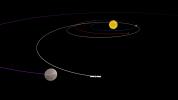
|
-
PIA26432:
-
Europa Clipper's Looping Journey to Jupiter (Artist's Concept)
Full Resolution:
TIFF
(550.2 kB)
JPEG
(105.7 kB)
|

|
2024-09-09 |
Europa
|
Europa Clipper
|
|
1921x1080x3 |
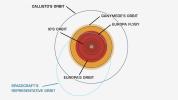
|
-
PIA26436:
-
Europa Clipper's Elliptical Orbit
Full Resolution:
TIFF
(605.2 kB)
JPEG
(105.8 kB)
|

|
2024-09-09 |
Europa
|
Europa Clipper
|
|
2550x2700x3 |

|
-
PIA26438:
-
Europa's Mysterious Interior (Artist's Concept)
Full Resolution:
TIFF
(12.34 MB)
JPEG
(469.9 kB)
|

|
2024-09-09 |
Europa
|
Europa Clipper
|
|
3840x2160x3 |
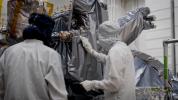
|
-
PIA26440:
-
Keeping Europa Clipper Clean
Full Resolution:
TIFF
(20.63 MB)
JPEG
(576.4 kB)
|

|
2024-09-09 |
Europa
|
Europa Clipper
|
|
3840x2160x3 |
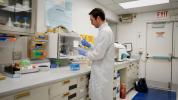
|
-
PIA26441:
-
Preparing for Planetary Protection Analysis
Full Resolution:
TIFF
(19.82 MB)
JPEG
(542.6 kB)
|

|
2024-09-10 |
Europa
|
Europa Clipper
|
|
3840x2160x3 |
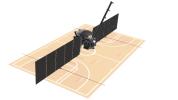
|
-
PIA26433:
-
Europa Clipper: NASA's Largest Planetary Spacecraft (Artist's Concept)
Full Resolution:
TIFF
(2.324 MB)
JPEG
(268.2 kB)
|

|
2024-09-10 |
Europa
|
Europa Clipper
|
|
1921x1081x3 |
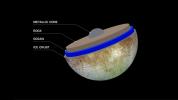
|
-
PIA26434:
-
Europa's Mysterious Interior (Artist's Concept)
Full Resolution:
TIFF
(1.076 MB)
JPEG
(92.32 kB)
|

|
2024-11-26 |
Europa
|
Europa Clipper
|
|
1920x1080x3 |
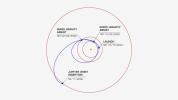
|
-
PIA26435:
-
Europa Clipper's Trajectory to Jupiter
Full Resolution:
TIFF
(345.7 kB)
JPEG
(87.15 kB)
|

|
2024-09-10 |
Europa
|
Europa Clipper
|
|
3841x2161x3 |
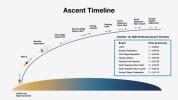
|
-
PIA26437:
-
Europa Clipper Launch Ascent Timeline
Full Resolution:
TIFF
(2.266 MB)
JPEG
(368.4 kB)
|

|
2024-09-10 |
Europa
|
Europa Clipper
|
|
3841x4320x3 |

|
-
PIA26439:
-
Europa Clipper: Equipped for Discovery (Artist's Concept)
Full Resolution:
TIFF
(5.712 MB)
JPEG
(617.2 kB)
|

|
2024-09-18 |
Europa
|
Europa Clipper
|
|
3840x2160x3 |
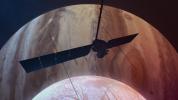
|
-
PIA26442:
-
Europa Clipper Spies Jupiter and Europa (Artist's Concept)
Full Resolution:
TIFF
(24.89 MB)
JPEG
(796.9 kB)
|

|
2024-09-18 |
Europa
|
Europa Clipper
|
|
3840x2160x3 |
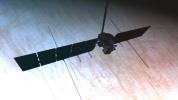
|
-
PIA26443:
-
Europa Clipper Zooms Over Its Target of Study (Artist's Concept)
Full Resolution:
TIFF
(22.53 MB)
JPEG
(807.4 kB)
|

|
2024-09-18 |
Europa
|
Europa Clipper
|
|
1000x1000x3 |
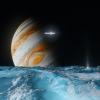
|
-
PIA26444:
-
Europa Clipper Explores an Icy Ocean World (Artist's Concept)
Full Resolution:
TIFF
(2.276 MB)
JPEG
(90.42 kB)
|

|
2024-09-18 |
Europa
|
Europa Clipper
|
|
1000x1000x3 |
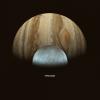
|
-
PIA26445:
-
Europa Clipper Approaches Its Target (Artist's Concept)
Full Resolution:
TIFF
(1.862 MB)
JPEG
(89.79 kB)
|

|
2024-10-02 |
Europa
|
Galileo
|
Solid-State Imaging
|
1024x425x3 |
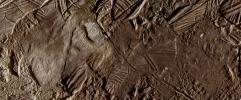
|
-
PIA26446:
-
Conamara Color Closeup
Full Resolution:
TIFF
(1.306 MB)
JPEG
(112.2 kB)
|

|
2024-10-11 |
Europa
|
Europa Clipper
|
|
3840x2160x3 |
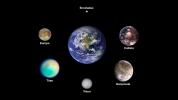
|
-
PIA26103:
-
Icy Moons in Our Solar System That May Have Oceans Now
Full Resolution:
TIFF
(4.458 MB)
JPEG
(307.2 kB)
|

|
2024-10-11 |
Europa
|
Galileo
|
Near Infrared Mapping Spectrometer
|
1062x1062x3 |
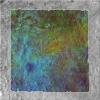
|
-
PIA26104:
-
Map of Water Signatures at Europa's Manannán Crater
Full Resolution:
TIFF
(3.385 MB)
JPEG
(289.1 kB)
|

|
2024-10-11 |
Europa
|
Europa Clipper
|
|
920x913x3 |
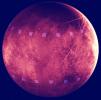
|
-
PIA26105:
-
Simulated View of Thermal Emissions from Europa
Full Resolution:
TIFF
(2.325 MB)
JPEG
(85.95 kB)
|

|
2024-10-11 |
Europa
|
Europa Clipper
|
|
4200x3319x3 |
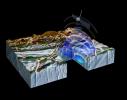
|
-
PIA26106:
-
How REASON Will Penetrate Europa's Surface (Artist's Concept)
Full Resolution:
TIFF
(15.87 MB)
JPEG
(661.2 kB)
|

|
2024-10-11 |
Europa
|
Europa Clipper
|
|
3000x3000x3 |
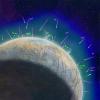
|
-
PIA26107:
-
Creation of Europa's Atmosphere (Artist's Concept)
Full Resolution:
TIFF
(27.01 MB)
JPEG
(1.102 MB)
|

|
2024-10-11 |
Europa
|
Europa Clipper
|
|
3840x2160x3 |
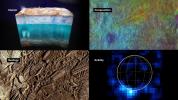
|
-
PIA26461:
-
Science Objectives of NASA's Europa Clipper Mission
Full Resolution:
TIFF
(20.62 MB)
JPEG
(919.2 kB)
|

|
2024-10-11 |
Europa
|
Hubble Space Telescope
|
Hubble Space Telescope
|
3840x2160x3 |
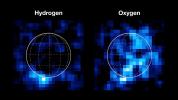
|
-
PIA26462:
-
Hubble's Ultraviolet Observations Reveal Hydrogen and Oxygen at Europa
Full Resolution:
TIFF
(8.013 MB)
JPEG
(325.8 kB)
|

|
2024-10-11 |
Europa
|
Europa Clipper
|
|
1103x669x3 |
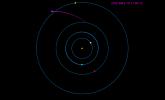
|
-
PIA26463:
-
Portion of Europa Clipper's Tour at Jupiter (Animation)
Full Resolution:
TIFF
(126.1 kB)
JPEG
(34.54 kB)
|

|
2024-10-14 |
Europa
|
Europa Clipper
|
|
8272x6200x3 |

|
-
PIA26422:
-
Europa Clipper Launch Team at JPL's Mission Control
Full Resolution:
TIFF
(141 MB)
JPEG
(6.777 MB)
|

|
1996-01-29 |
Ganymede
|
Voyager
|
VG ISS - Narrow Angle
|
2000x2000x3 |
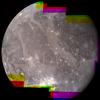
|
-
PIA00081:
-
Ganymede Mosaic
Full Resolution:
TIFF
(9.883 MB)
JPEG
(445.4 kB)
|

|
1996-06-06 |
Ganymede
|
Galileo
|
Solid-State Imaging
|
825x825x1 |

|
-
PIA00273:
-
Optical Navigation Image of Ganymede
Full Resolution:
TIFF
(6.779 kB)
JPEG
(9.291 kB)
|

|
1997-09-07 |
Ganymede
|
Galileo
|
Solid-State Imaging
|
526x797x1 |

|
-
PIA00276:
-
Ganymede - Ridges, Grooves, Craters and Smooth Areas of Uruk Sulcus Region
Full Resolution:
TIFF
(530 kB)
JPEG
(153.1 kB)
|

|
1997-09-07 |
Ganymede
|
Galileo
|
Solid-State Imaging
|
1105x798x1 |
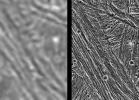
|
-
PIA00277:
-
Ganymede - Comparison of Voyager and Galileo Resolution
Full Resolution:
TIFF
(718.2 kB)
JPEG
(148.5 kB)
|

|
1997-09-07 |
Ganymede
|
Galileo
|
Solid-State Imaging
|
640x480x1 |
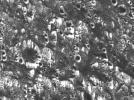
|
-
PIA00278:
-
Ganymede - Dark Terrain in Galileo Regio
Full Resolution:
TIFF
(286.6 kB)
JPEG
(60.72 kB)
|

|
1997-09-07 |
Ganymede
|
Galileo
|
Solid-State Imaging
|
574x798x1 |

|
-
PIA00279:
-
Ganymede - Ancient Impact Craters in Galileo Regio
Full Resolution:
TIFF
(526.2 kB)
JPEG
(169.6 kB)
|

|
1997-09-07 |
Ganymede
|
Galileo
|
Solid-State Imaging
|
544x796x1 |

|
-
PIA00280:
-
Ganymede - Mixture of Terrains and Large Impact Crater in Uruk Sulcus Region
Full Resolution:
TIFF
(479.4 kB)
JPEG
(135.4 kB)
|

|
1997-09-07 |
Ganymede
|
Galileo
|
Solid-State Imaging
|
1443x1656x1 |

|
-
PIA00281:
-
Ganymede - Galileo Mosaic Overlayed on Voyager Data in Uruk Sulcus Region
Full Resolution:
TIFF
(2.27 MB)
JPEG
(406.5 kB)
|

|
1998-06-04 |
Ganymede
|
Voyager
|
VG ISS - Wide Angle
|
1024x520x3 |
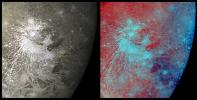
|
-
PIA00334:
-
Crater Rays on Ganymede
Full Resolution:
TIFF
(1.644 MB)
JPEG
(96.83 kB)
|

|
1996-07-17 |
Ganymede
|
Voyager
|
VG ISS - Narrow Angle
|
300x300x1 |
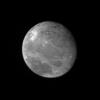
|
-
PIA00351:
-
Ganymede at 2.6 million miles
Full Resolution:
TIFF
(33.81 kB)
JPEG
(4.17 kB)
|

|
1996-07-17 |
Ganymede
|
Voyager
|
VG ISS - Narrow Angle
|
300x300x3 |
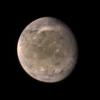
|
-
PIA00352:
-
Ganymede at 3.4 million miles
Full Resolution:
TIFF
(133.4 kB)
JPEG
(5.592 kB)
|

|
1999-03-15 |
Ganymede
|
Voyager
|
VG ISS - Narrow Angle
|
600x600x3 |
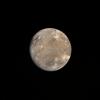
|
-
PIA00353:
-
Ganymede Full Disk
Full Resolution:
TIFF
(310.5 kB)
JPEG
(13.11 kB)
|

|
1996-07-17 |
Ganymede
|
Voyager
|
VG ISS - Narrow Angle
|
460x780x1 |

|
-
PIA00354:
-
Ganymede at 87,000 miles
Full Resolution:
TIFF
(218.7 kB)
JPEG
(115.5 kB)
|

|
1999-02-06 |
Ganymede
|
Voyager
|
VG ISS - Narrow Angle
|
740x730x3 |
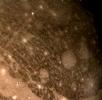
|
-
PIA00356:
-
Ganymede's Northern Hemisphere
Full Resolution:
TIFF
(1.381 MB)
JPEG
(82.46 kB)
|

|
1999-02-06 |
Ganymede
|
Voyager
|
VG ISS - Narrow Angle
|
816x870x3 |

|
-
PIA00357:
-
Bright Halo Impact Crater on Ganymede
Full Resolution:
TIFF
(2.004 MB)
JPEG
(92.06 kB)
|

|
1997-01-09 |
Ganymede
|
Voyager
|
VG ISS - Narrow Angle
|
700x500x1 |
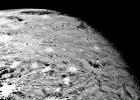
|
-
PIA00380:
-
Ganymede At 150,000 Miles
Full Resolution:
TIFF
(293.4 kB)
JPEG
(87.75 kB)
|

|
1997-09-07 |
Ganymede
|
Galileo
|
Solid-State Imaging
|
2470x2110x1 |
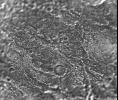
|
-
PIA00492:
-
Galileo Regio Mosaic - Galileo over Voyager Data
Full Resolution:
TIFF
(4.43 MB)
JPEG
(703.3 kB)
|

|
1997-09-07 |
Ganymede
|
Galileo
|
Solid-State Imaging
|
1665x1882x1 |

|
-
PIA00493:
-
Uruk Sulcus Mosaic - Galileo over Voyager Data
Full Resolution:
TIFF
(2.82 MB)
JPEG
(463.6 kB)
|

|
1997-11-18 |
Ganymede
|
Galileo
|
Solid-State Imaging
|
400x400x1 |
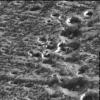
|
-
PIA00496:
-
Ice-frosted crater tops on Ganymede
Full Resolution:
TIFF
(162.4 kB)
JPEG
(31.02 kB)
|

|
1997-11-18 |
Ganymede
|
Galileo
|
Solid-State Imaging
|
560x905x1 |

|
-
PIA00497:
-
Ganymede's Nippur Sulcus
Full Resolution:
TIFF
(481.5 kB)
JPEG
(99.55 kB)
|

|
1997-11-18 |
Ganymede
|
Galileo
|
Solid-State Imaging
|
1920x1080x3 |
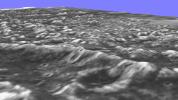
|
-
PIA00498:
-
Stereo View of Ganymede's Galileo Regio
Full Resolution:
TIFF
(2.399 MB)
JPEG
(178.4 kB)
|

|
1998-03-26 |
Ganymede
|
Galileo
|
Near Infrared Mapping Spectrometer
|
1950x1500x3 |
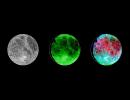
|
-
PIA00500:
-
NIMS Ganymede Surface Map
Full Resolution:
TIFF
(1.156 MB)
JPEG
(170.1 kB)
|

|
1997-12-16 |
Ganymede
|
Galileo
|
|
2667x2000x3 |
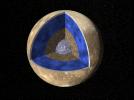
|
-
PIA00519:
-
Ganymede G1 & G2 Encounters - Interior of Ganymede
Full Resolution:
TIFF
(5.694 MB)
JPEG
(624.6 kB)
|

|
1997-11-18 |
Ganymede
|
Galileo
|
Solid-State Imaging
|
1920x1080x3 |
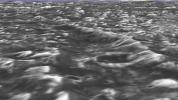
|
-
PIA00521:
-
Stereo View of Ganymede's Galileo Region
Full Resolution:
TIFF
(2.568 MB)
JPEG
(204.6 kB)
|

|
1997-09-07 |
Ganymede
|
Galileo
|
Solid-State Imaging
|
1200x800x1 |
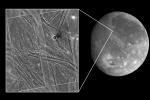
|
-
PIA00579:
-
Ganymede Uruk Sulcus High Resolution Mosaic Shown in Context
Full Resolution:
TIFF
(628.1 kB)
JPEG
(130.6 kB)
|

|
1997-09-07 |
Ganymede
|
Galileo
|
Solid-State Imaging
|
1200x800x1 |
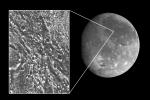
|
-
PIA00580:
-
Ganymede Galileo Regio High Resolution Mosaic Shown in Context
Full Resolution:
TIFF
(593.1 kB)
JPEG
(136 kB)
|

|
1997-09-07 |
Ganymede
|
Galileo
|
Solid-State Imaging
|
1097x885x1 |
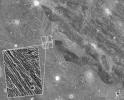
|
-
PIA00705:
-
Detail of Ganymede's Uruk Sulcus Region as Viewed by Galileo and Voyager
Full Resolution:
TIFF
(1.014 MB)
JPEG
(236.1 kB)
|

|
1997-09-07 |
Ganymede
|
Galileo
|
Solid-State Imaging
|
800x800x1 |
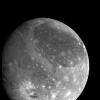
|
-
PIA00706:
-
Ganymede Global
Full Resolution:
TIFF
(371.9 kB)
JPEG
(52.96 kB)
|

|
1997-09-07 |
Ganymede
|
Galileo
|
Solid-State Imaging
|
580x360x1 |
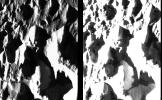
|
-
PIA00707:
-
Fine Details of the Icy Surface of Ganymede
Full Resolution:
TIFF
(108 kB)
JPEG
(47.1 kB)
|

|
1998-08-03 |
Ganymede
|
Galileo
|
Solid-State Imaging
|
800x800x3 |
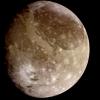
|
-
PIA00716:
-
Ganymede Color Global
Full Resolution:
TIFF
(1.121 MB)
JPEG
(46.44 kB)
|

|
1997-09-07 |
Ganymede
|
Galileo
|
Solid-State Imaging
|
523x764x1 |

|
-
PIA00722:
-
Galileo Resolutions: Ganymede and the San Francisco Bay Area
Full Resolution:
TIFF
(379.3 kB)
JPEG
(72.72 kB)
|

 Planetary Data System
Planetary Data System





















































































































